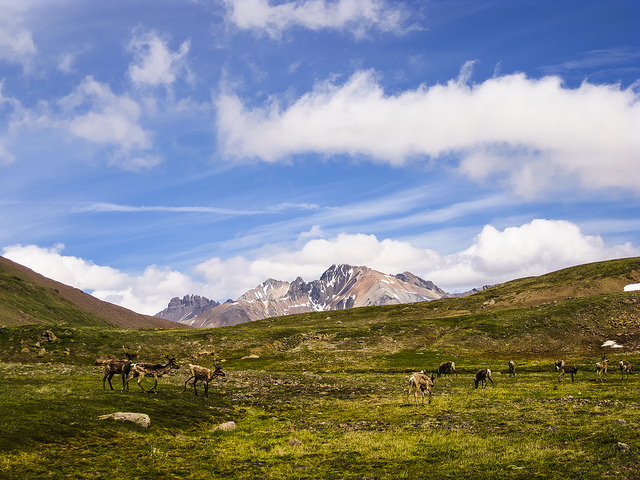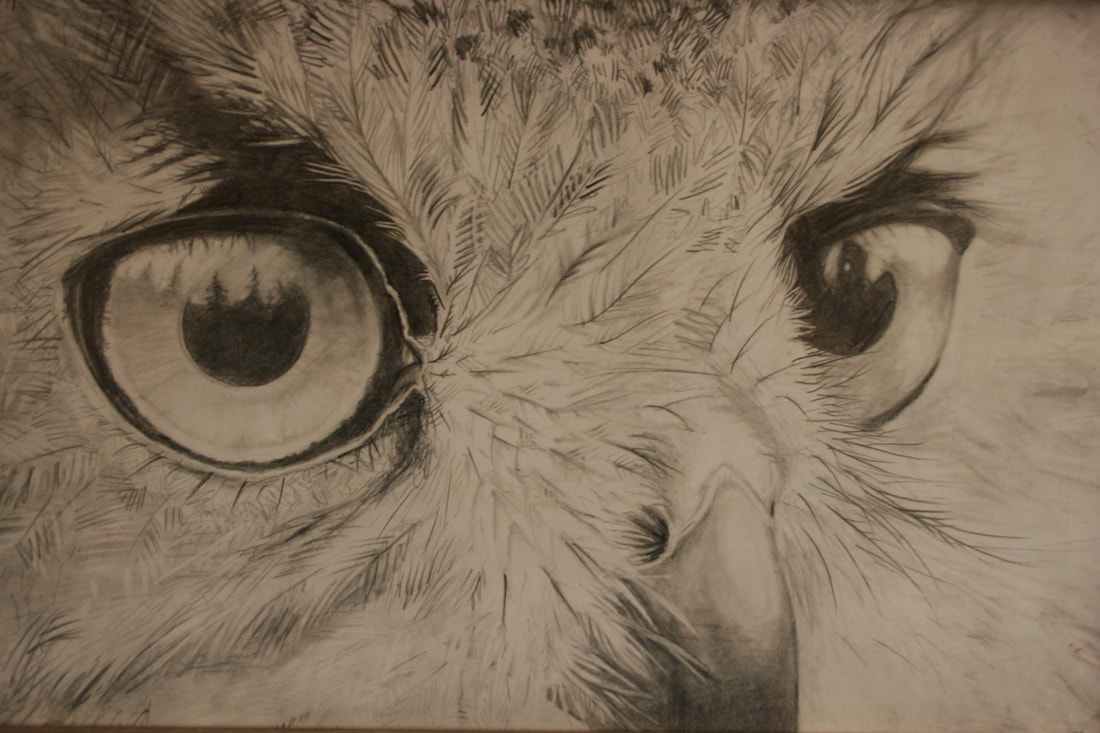|
cBy Janelle Eklund
All the good weather ran its course. It rained in the night, then let up. But by the time we woke at 7:00 it started to rain again in a steady gate. It was a VERY long day in the tent. After stretching and having breakfast there was nothing to do but wait. We left our books at the airstrip to save on weight, which was a huge mistake. We watched fresh snow form on top of the mountains before the clouds descended and hid them. The wind is keeping the rain company. It’s tough on the ‘ol back just sitting or laying for hours. So many different positions are used...sitting with legs out; sitting with legs crossed, laying with head propped on one arm until it feels like it will break off; laying with your hands propped under your head till they go to sleep; just laying and dozing. After doing that we read the labels on just about everything we have, including clothes - hah!. Then we read the only book we brought with us - Birds of North America - for the umpteenth time. Then it was lunch time and we repeated the lunch we had yesterday. We are breaking all the rules and eating in the tent...being very careful. At least stuff is easy to cook - just add hot water and wait - and wait - and wait till it re-hydrates. Of Course we have plenty of time to wait. After lunch the rain had died enough for us to venture out. We walked over to the garbage heaps left there from the 1960's and found a couple of old tent poles to use as walking sticks for balance in climbing down the steep mountain. We decided the weather was good enough to hike down the Goat Trail. At this point it was just spitting rain. So we packed one pack with wool sweaters, hats, mittens, water, gorp, maps, notebook, bird book, camera and headed down the trail. A herd of fifty caribou grazed close to the trail but headed to the other side of Chitistone Lake when they saw us. We also saw two bands of Dall sheep on the mountain side. There were 17 in one and 13 in the other. Six lambs were in the group of 13. They headed further up the mountain when we went by, scrambling straight up ignoring gravity and steepness. The trail was pretty intermittent and difficult to find. Although we didn’t need to find it because you can see where you are at all times. The harsh weather keeps trees and brush from growing this high up. The trail would be very distinct and then all of a sudden end. The back end fuselage of a plane let our imaginations conjure up the story of its demise. We walked about one and a half miles to the end of the pass. Parts of the trail were mushy wet tundra. Beyond the end of the pass the trail traverses steep mountain slopes with some scree (rocky) fields. On the way back to camp the wind was at our backs. We came back on the west side of the lake and did some birding along the way. Had a hard time identifying a couple birds but finally, after looking in the book, decided they were all snow buntings - males, females and chicks. They all look different. After all that reading you'd think we would have figured it out right away! The greater scoup and common golden eye ducks mingled together on the lake. There are lots of semi palmated plovers - a small bird with a white head and black mask around its eyes. We were surprised to see the mew gull way up here - but here it is! Three ravens played loop-de-loops in the wind. Last night before we went to sleep the glacier right across from camp gave us a show. We heard a crack and looked over to see a small chunk of ice fall off. More followed, tumbling down the rocky vertical cliff the glacier hung on to...just a little yawn before sleep. From my light to yours-
0 Comments
Leave a Reply. |
Who We AreWISEfriends are several writers connected with Wrangell Institute for Science and Environment, a nonprofit organization located in Alaska's Copper River Valley. Most of these articles originally appeared in our local newspaper, the Copper River Record. Archives
August 2021
Categories
All
|
|
WISE is a
501(c)3 nonprofit organization |
Contact Us |



 RSS Feed
RSS Feed
